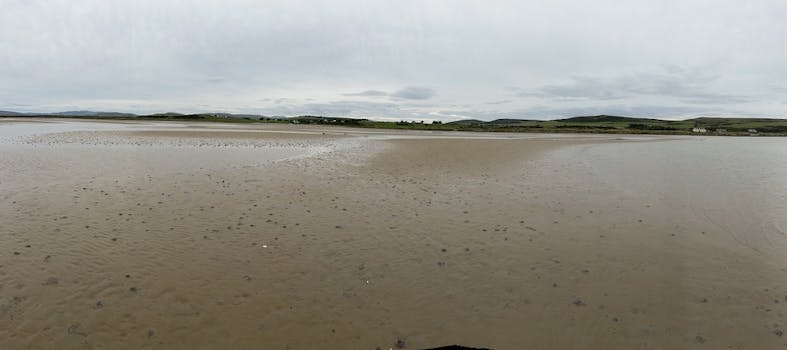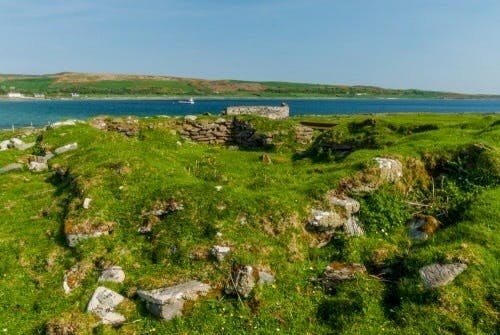
There are several beaches on the island and each one with its own distinct character. St. Ninian's Bay feels special with its rugged beauty, enriched with history and the diverse wildlife that live in and around it.
Just a short stroll from Seaview Cottage lies St. Ninian’s Bay. The tide can go out a VERY long way, and the beach becomes the perfect playground for playful pups and adventurous children, offering ample puddles to splash in and open spaces to roam. However, swimmers and paddleboarders should be mindful, for venturing out during low tide might mean a lengthy trek to reach the water's edge. Having said that, when the tide is in it the shallow bay is an ideal spot for those hardy souls who indulge in wild swimming.
The shoreline of St. Ninian’s Bay is a haven for beachcombers, offering a trove of treasures waiting to be discovered - shells, interesting pebbles, starfish and sea urchin shells.
This picturesque bay and its surrounding landscape teem with a wide variety of birdlife, from oystercatchers and curlews to ducks and gulls, and if you are lucky, even white-tailed eagles. Depending on the season, the neighbouring fields come alive with the sights (and SOUNDS) of Canadian geese.
On the northern edge of St Ninian's Bay, stand a pair of prehistoric standing stones. The stones may be well-weathered and smaller than other standing stones you will see on Bute, such as the ones at Blackpark or Stravanan Bay, but they are just as significant.
Following the path towards the beach, a signpost directs you towards St. Ninian’s Point, part way along this path you will find the standing stones on your right. A slight detour over a small fence may be necessary, there should be a small dyke there, which should make it easier to get over. The stones sit within a vast salt marsh - a wonderful coastal ecosystem, which provides a home for many insects, small mammals, and birds, notably the curlew, whose haunting cry can often be heard from Seaview Cottage.
Further along the path to St. Ninian’s Point you will find the remains of St. Ninian's Chapel and some ancient burial cists, a testament to the rich history of the area. The stone cists date back to the Bronze Age, while the chapel was erected in the late 6th century by Christian monks from Whithorn in Dumfries and Galloway. It is thought that they decided to build the chapel at the site of the pagan burial grounds because the area was already of significance to the local community.
With stunning views stretching across to the Isle of Arran and Inchmarnock, St. Ninian’s Bay has a special beauty, and St. Ninian’s Point, in particular, evokes a sense of reverence and introspection. Here, amidst so much history and natural beauty, you cannot help but feel the echo of generations past—a reminder that the footprints of those who came before us still linger..






